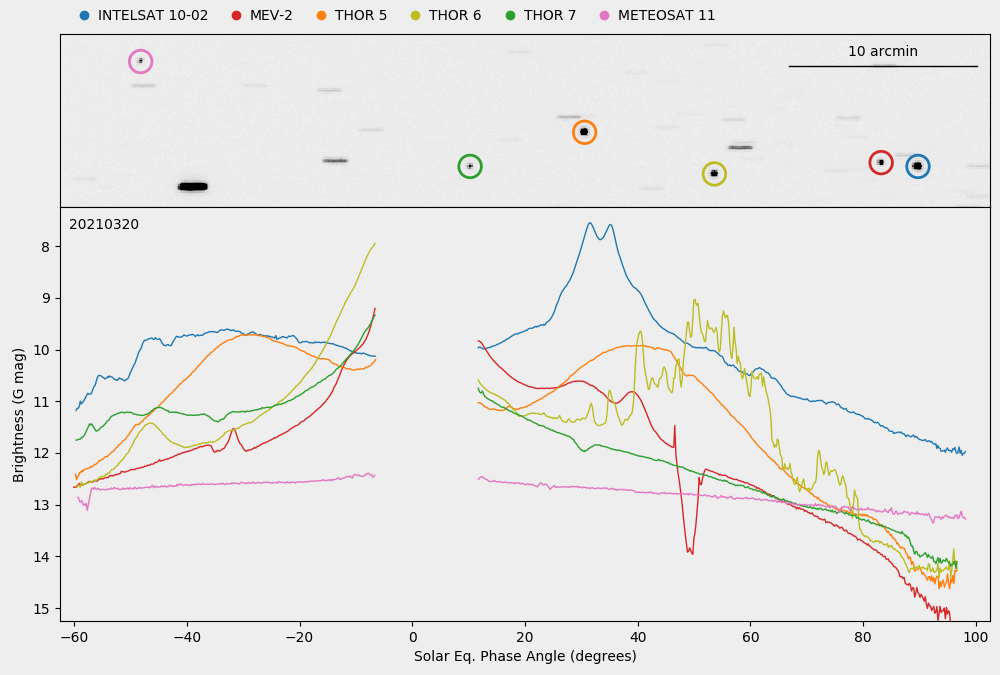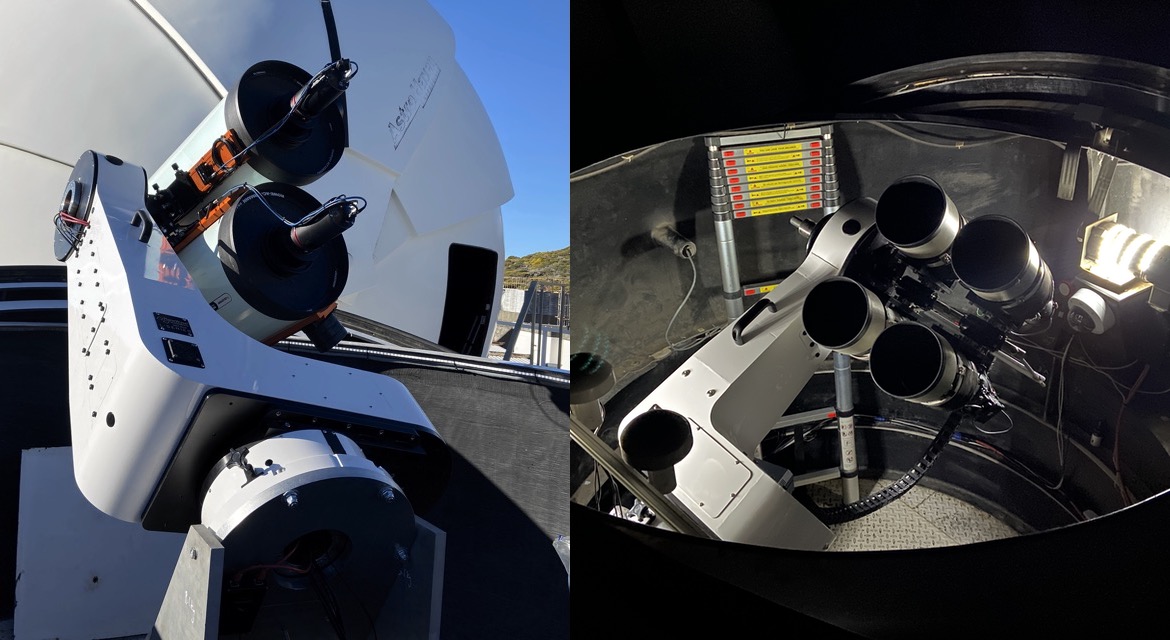Paul Chote
I am an Assistant Professor in the Astronomy and Astrophysics group at the University of Warwick. My research interests include applying astronomical techniques towards the identification and characterisation of Resident Space Objects (RSOs: i.e. satellites and space debris), robotic telescopes and instrumentation, and high-speed photometry of variable stars.
Space Domain Awareness (SDA)
The rapidly increasing population of artificial objects in the near-Earth environment is a cause for growing concern to the safety of the satellite services that underpin our modern civilisation, and to the cultural and scientific impact of their light pollution on the night sky. The first steps in mitigating these risks are to measure and understand them. Techniques and instrumentation that are considered routine within astronomy can be adapted to this cause, with the potential to dramatically improve our capabilities for understanding the space domain.
My research in the SDA area has focused on the use of optical telescopes to survey for man-made objects orbiting the Earth, to track non-keplerian orbits of objects that use electric propulsion, and on using high-speed light curves and colour photometry to constrain the shape and attitude state of both active and defunct satellites.

Figure: Measurements of the brightness of several Geostationary satellites over the course of a night can be interpreted to reveal information about their size, shape, and behaviour.
I am also a seminar coordinator and part of the management board for the Warwick Center for Space Domain AwarenessLink opens in a new window.
Instrumentation
Novel science does not require large-aperture telescopes or multi-million dollar instruments! By combining commercial off-the-shelf (COTS) components (e.g optics and cameras) with custom hardware and software we are able to develop cost-efficient instruments that are optimised for specific science cases.
I am particularly interested in applying technologies from the open hardware / "Maker" community (e.g. 3d printing, Raspberry Pi/Arduino-based electronics) and open source software to improve integration and reduce reliance on proprietary products.
During my PhD I led the development of the Puoko-nui photometerLink opens in a new window, which used a custom GPS-based timing system to control a commercial frame-transfer CCD camera. This system was operated on telescopes in New Zealand and the USA for observing pulsating White Dwarf stars and other short-period targets.
In my time at Warwick I have developed and operated several robotic telescopes for the Warwick La Palma Observatory, including:
- The Warwick 1m Telescope (W1m) - A general purpose F/7 telescope with a dual-arm (broad optical + near infra-red) camera.
- RASA Test Telescope (decommissioned) - A 36cm wide-field test instrument for SDA research.
- CLASP Telescope - Twin 36cm telescopes on a fast-slewing mount with fast imaging cameras for SDA research.
- SuperWASP Overhaul - A redevelopment of the SuperWASP North facility into a wide-field (75 square degree) simultaneous-four-colour survey instrument that will be used to investigate the colour properties of RSOs.
I have designed a flexible telescope control systemLink opens in a new window and custom hardware safety systems that allow these facilities to automatically take observations during the night and safely close themselves down when bad weather rolls in.

Figure: The CLASP (left) and upgraded SuperWASP (right) telescopes.
I also help support the Gravitational wave Optical Transient ObservatoryLink opens in a new window project in La Palma and Australia, and have contributed to the Next Generation Transit SurveyLink opens in a new window.
High-speed Photometry
There are a range of astrophysical and man-made phenomena that cause objects in the sky to change brightness on timescales ranging from milliseconds to days. My PhD and initial post-doc research focused around White Dwarf stars, which can show variability on a timescale of minutes-to-hours due to non-radial pulsations; orbiting companions; accretion disks; or transiting debris.

Figure: Light curves of a pulsating White Dwarf star and a tumbling satellite can show remarkable similarities, but occur on very different timescales. Techniques that have been developed for astrophysical purposes can be translated to understanding man-made objects.
From 2018 I switched my main focus to SDA, applying the same techniques to observe and analyse RSOs which show extreme brightness changes on timescales as short as milliseconds as the geometry of reflected sunlight changes in response to uncontrolled tumbling or the rotation of the earth.

